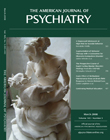Abstract
Objective: Although widely reported among Latino populations, contradictory evidence exists regarding the generalizability of the immigrant paradox, i.e., that foreign nativity protects against psychiatric disorders. The authors examined whether this paradox applies to all Latino groups by comparing estimates of lifetime psychiatric disorders among immigrant Latino subjects, U.S-born Latino subjects, and non-Latino white subjects. Method: The authors combined and examined data from the National Latino and Asian American Study and the National Comorbidity Survey Replication, two of the largest nationally representative samples of psychiatric information. Results: In the aggregate, risk of most psychiatric disorders was lower for Latino subjects than for non-Latino white subjects. Consistent with the immigrant paradox, U.S.-born Latino subjects reported higher rates for most psychiatric disorders than Latino immigrants. However, rates varied when data were stratified by nativity and disorder and adjusted for demographic and socioeconomic differences across groups. The immigrant paradox consistently held for Mexican subjects across mood, anxiety, and substance disorders, while it was only evident among Cuban and other Latino subjects for substance disorders. No differences were found in lifetime prevalence rates between migrant and U.S.-born Puerto Rican subjects. Conclusions: Caution should be exercised in generalizing the immigrant paradox to all Latino groups and for all psychiatric disorders. Aggregating Latino subjects into a single group masks significant variability in lifetime risk of psychiatric disorders, with some subgroups, such as Puerto Rican subjects, suffering from psychiatric disorders at rates comparable to non-Latino white subjects. Our findings thus suggest that immigrants benefit from a protective context in their country of origin, possibly inoculating them against risk for substance disorders, particularly if they emigrated to the United States as adults.



